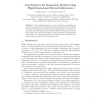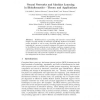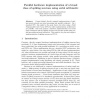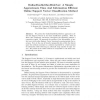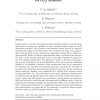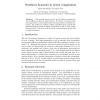103
Voted
ESANN
2006
15 years 2 months ago
2006
Mutual information may be used to select the embedding lag of a time series. However, this lag selection is usually limited to the analysis of the mutual information between a pair...
124
Voted
ESANN
2006
15 years 2 months ago
2006
Bioinformatics is a promising and innovative research field. Despite of a high number of techniques specifically dedicated to bioinformatics problems as well as many successful app...
126
Voted
ESANN
2006
15 years 2 months ago
2006
Abstract. Current digital, directly mapped implementations of spiking neural networks use serial processing and parallel arithmetic. On a standard CPU, this might be the good choic...
100
Voted
ESANN
2006
15 years 2 months ago
2006
This work presents two kernels which can be applied to sets of spike times. This allows the use of state-of-the-art classification techniques to spike trains. The presented kernels...
115
Voted
ESANN
2006
15 years 2 months ago
2006
Abstract. We present the OnlineDoubleMaxMinOver approach to obtain the Support Vectors in two class classification problems. With its linear time complexity and linear convergence ...
110
Voted
ESANN
2006
15 years 2 months ago
2006
Abstract. We introduce a new class of recurrent, truly sequential SVM-like devices with internal adaptive states, trained by a novel method called EVOlution of systems with KErnel-...
122
click to vote
ESANN
2006
15 years 2 months ago
2006
In this article, we extend a local prototype-based learning model by active learning, which gives the learner the capability to select training samples during the model adaptation...
102
Voted
ESANN
2006
15 years 2 months ago
2006
This contribution describes an almost parameterless iterative context compilation method, which produces feature layers, that are especially suited for mixed bottom-up top-down ass...
144
click to vote
ESANN
2006
15 years 2 months ago
2006
The Self-Organizing map (SOM), a powerful method for data mining and cluster extraction, is very useful for processing data of high dimensionality and complexity. Visualization met...
81
Voted
ESANN
2006
15 years 2 months ago
2006
This tutorial reports on the use of nonlinear dynamics in several different models of neural systems. We discuss a number of distinct approaches to neural information processing ba...
